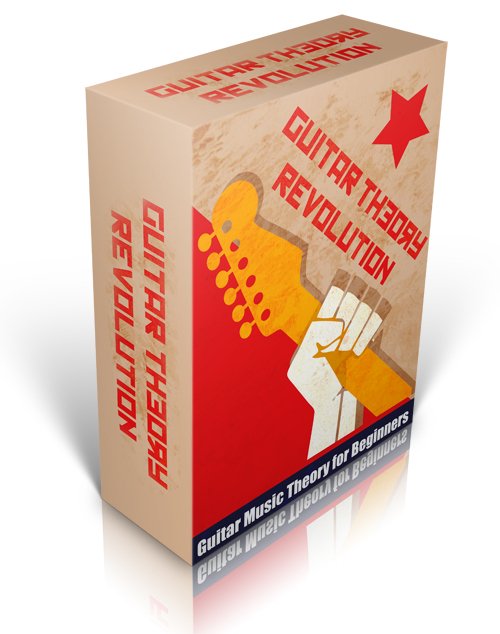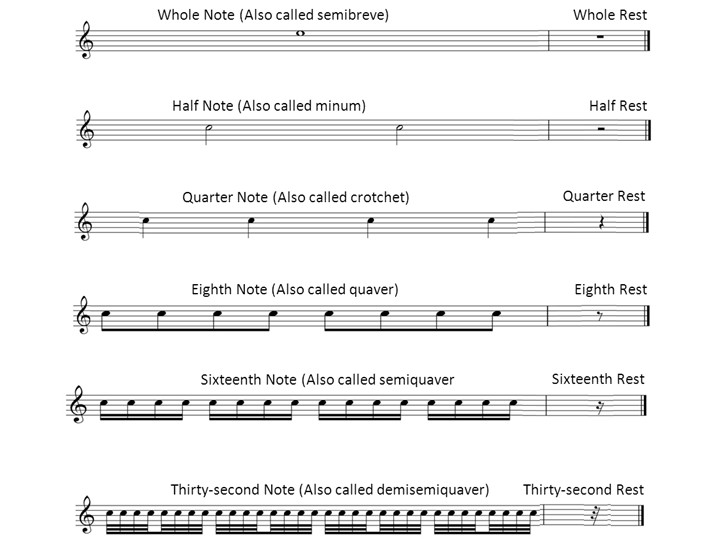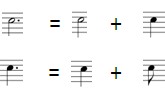Music Theory
If you get a bit of a knot in your tummy every time someone says music theory, then this page will be a bit of a help. Without getting into deep technical torture, it introduces you to everything that you need to get started and to get going.
The theory presented in this section is all that you need to take you from raw beginner to your first performance piece.
I’m getting a lot of messages from people coming here because they want to learn to play guitar as part of worship. If this is you, you might want to join Aaron Anastasi’s programme. Aaron is a musician and a worship leader. He put together a step by step programme for aspiring Christian musicians. If you're interested, you can use the exercises and advice in learn-classical-guitar-today to develop your finger strength and dexterity and Aaron's lessons to work on strumming and worship music.
CLICK HERE TO LEARN WORSHIP GUITAR !!
Music Notes
Notes on the guitar (musical notation for the guitar) is written on the 'treble clef' as indicated in the music in the figure below.

One way of learning them is to separate the lines from the spaces. The notes on the lines are shown in the staff below. They can be remembered through a sentence Every Good Boy Deserves Fruit.

The notes in the spaces are shown in the staff below. They can be remembered through the word F-A-C-E which spells the letters on the staff.


You'll need to go a little deeper into music theory as you proceed. The best online resource for this is Guitar Theory Revolution. It recognises that music theory is very hard for guitarists because music theory has till now been located in the piano paradigm. The Guitar Theory Revolution overthrows the piano paradigm that is holding you back and embraces the attributes of the guitar to unpack music theory. In fact, it goes further and allows you to see that the guitar is one of the best instruments for learning theory.
Note values
Note value refers to the duration of the sound which the note represents which is determined by the form of the note. Each of these notes has a rest or a period of silence which corresponds with the value or duration of the note as indicated in the music in the figure below.

Dotted Notes
Dotted notes occurs where a dot is placed immediately after a note or a rest. The note increases the note by the value of half the notes value. When a second note is added its value is equal to half that of the second note. You will rarely encounter this in the beginning stages of playing music and, with the exception of counterpoint, rarely in guitar music.

Music Rhythmn
Note value refers to the duration of the sound which the note represents which is determined by the form of the note. Each of these notes has a rest or a period of silence which corresponds with the value or duration of the note as indicated above.
Time Signatures
The time signature can be found at the beginning of a musical score. It consists of two numbers: one on top and one at the bottom.The top figure shows how many beats in the bar and the bottom figure shows the kind of note in the bar. In the example above, there are 4 beats in the bar and each beat is equivalent to a quarter note or crotchet. The list below provides the type of beat indicated by different figures: - 2 = minums (half note) - 4 = crochet (quarter note) - 8 = quavers (eight note) - 16 = semi quavers (sixteenth note) As seen in this table, the notation of half note, quarter, eighth and sixteenth note are a good indicator of the value of the note.

Guitar Basics
You can scroll the rest of the guitar basics pages by scanning the list below, or scrolling through the navigation bar
Buying a Classical Guitar: If you need to buy a guitar or are thinking about buying a new guitar, then this page is for you. It provides useful tips on how to pick your first classical guitar.
Sitting Positions: This lesson takes you through the principles and dos and donts of the classical guitar sitting position. It introduces you to the guitar supports available including footstools, the Efel, the Dynarette, the A-Frame and the ErgoPlayay.
Notes on the Guitar: Becoming familiar with the notes on the guitar is essential for any guitarist. This lesson provides guidelines and free guitar software. This is where you pick up the guitar and begin playing.
Finger Names : Finger names in classical guitar scores.
How to Tune your Guitar: How to tune your guitar. There is nothing worse than playing on an untuned guitar. This page teaches you how to tune your guitar with and without an electronic tuner.
Guitar Parts: Start by becoming familiar with the parts of the guitar so that you know what we're talking about when we talk about the bridge or the fret.

You'll need to go a little deeper into music theory as you proceed. The best online resource for this is Guitar Theory Revolution. It recognises that music theory is very hard for guitarists because music theory has till now been located in the piano paradigm. The Guitar Theory Revolution overthrows the piano paradigm that is holding you back and embraces the attributes of the guitar to unpack music theory. In fact, it goes further and allows you to see that the guitar is one of the best instruments for learning theory.





